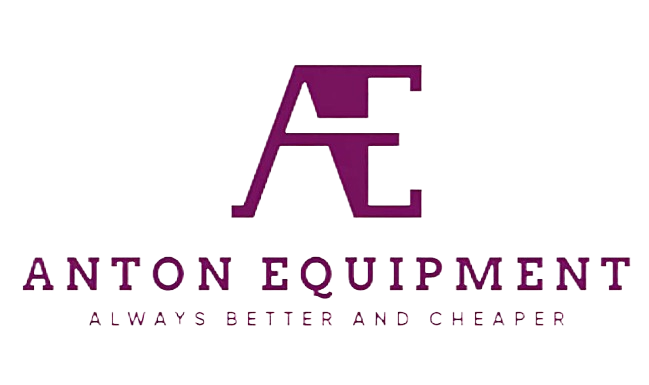News
Maximizing Efficiency: Hydraulic Systems in Modern Excavator Attachments
The Role of Hydraulic Systems in Modern Excavator Attachments
Enhancing Power and Precision in Heavy-Duty Tasks
Hydraulic systems play a crucial role in boosting the efficiency of modern excavators, significantly enhancing their capability to perform heavy-duty tasks with increased power. By facilitating precise control, these systems enable operators to execute tasks with greater accuracy, thereby minimizing the potential for damage to the worksite. This precision is particularly valuable in complex operations where exact measurements are essential. According to industry reports, using advanced hydraulic systems can result in up to 30% more output compared to traditional systems. This substantial increase in productivity underscores the importance of hydraulic technology in modern construction equipment.
Integration with Mini Excavator and Skid Steer Attachments
The implementation of hydraulic systems allows excavators to seamlessly integrate with various attachments, including mini excavator attachments and skid steer attachments, thereby increasing their versatility. These systems are designed to be adaptable, allowing operators to switch quickly between different attachments, thus optimizing the functionality of the excavator for diverse tasks. This adaptability is beneficial in dynamic work environments where efficiency is key. Studies show that machines equipped with effective hydraulic integration complete projects faster, as reduced downtime during attachment changes leads to increased productivity. The ability to adapt to various tasks without sacrificing time or efficiency is a significant advantage of hydraulic systems in construction equipment.
Key Components of Efficient Hydraulic Systems
High-Pressure Hydraulic Pumps and Flow Optimization
High-pressure hydraulic pumps are essential in generating the necessary force for excavators to handle heavy loads efficiently. These pumps serve as the backbone of hydraulic systems, converting the mechanical energy produced by the engine into hydraulic energy, thus facilitating the operation of various tools and attachments. Implementing flow optimization techniques, such as variable displacement pumps, enhances the efficiency of hydraulic systems by adjusting the flow based on demand. This approach can significantly reduce overall energy consumption, as evidenced by manufacturer studies that show increased lifespan of hydraulic components when flow optimization is in use.
Advanced Control Valves for Reduced Energy Loss
Advanced control valves play a pivotal role in minimizing energy loss within hydraulic systems, leading to improved operational efficiency. These valves are designed to offer precise control over fluid flow, allowing for enhanced responsiveness of the equipment during high-demand tasks. This precision not only ensures smooth operation but also prevents unnecessary energy wastage. According to hydraulic engineers, integrating advanced control valves can result in a 15-20% reduction in energy consumption, making them a valuable component in optimizing machine performance.
Hydraulic Quick Coupler Excavator Compatibility
Hydraulic quick couplers are instrumental in creating streamlined connections between excavators and attachments, significantly enhancing operational efficiency and flexibility. These couplers are designed to seamlessly connect and disconnect attachments without requiring additional tools, thus reducing downtime. The compatibility of hydraulic systems with quick couplers minimizes the time needed for changing attachments, which is a crucial factor in fast-paced operational environments. Statistics from construction companies suggest that using hydraulic quick couplers can cut tool change times by up to 50%, leading to increased productivity and reduced operational delays.
Optimizing Attachment Performance for Specific Tasks
Excavator Hydraulic Breakers: Powering Through Rock and Concrete
Excavator hydraulic breakers are essential tools in construction and demolition, harnessing hydraulic power to efficiently break through rock and concrete. This capability is made possible by the breaker’s design, which maximizes impact force for effective demolition tasks. High-impact energy coupled with a robust hydraulic system allows these breakers to operate efficiently, reducing the time and labor needed in challenging environments. According to studies in the construction industry, utilizing hydraulic breakers can substantially increase productivity by expediting task completion, enabling workers to tackle more projects in less time.
Excavator Augers: Precision Drilling with Hydraulic Force
Excavator augers, powered by hydraulic systems, deliver precise drilling capabilities essential for foundation work and landscaping projects. These augers feature adjustable torque settings, allowing them to adapt to varying soil conditions for optimized drilling performance. Such precision not only enhances the quality of the work but also significantly reduces project completion times. Historical data highlights that hydraulic augers can drastically cut down the overall time required for drilling activities, making them indispensable in tasks necessitating accuracy and speed.
Versatility of Multi-Functional Grapples and Buckets
Multi-functional grapples and buckets expand the operational capabilities of excavators, enabling them to perform a range of tasks such as grubbing, loading, and transporting materials. The integration of hydraulic systems enhances the gripping strength and capacity of these attachments, allowing them to handle diverse materials effectively. Industry evaluations indicate that using these multi-functional attachments streamlines workflow and improves resource management on job sites, fostering a more efficient and coordinated operational environment. Incorporating these devices into your work can lead to better asset utilization and swift task execution, thus optimizing overall project delivery.
Strategies for Maximizing Hydraulic System Efficiency
Intelligent Flow Rate Adjustment for Attachment Compatibility
Implementing intelligent flow rate adjustment technologies is essential for ensuring hydraulic systems remain compatible with various attachments. This technology allows for fine-tuning flow rates to match each attachment's unique requirements, reducing strain on both the hydraulic system and attachments. In turn, this can extend their lifespan and enhance operational efficiency. Field analysis indicates that intelligent flow rate adjustments can boost attachment performance by as much as 25%. By achieving an ideal flow rate, operators can maintain optimal energy usage and minimize equipment wear and tear.
Preventative Maintenance to Minimize Downtime
Regular preventative maintenance of hydraulic systems is crucial in minimizing unexpected downtime and upholding optimal performance levels. Scheduled maintenance allows for early detection of potential issues, preventing them from escalating into significant equipment failures. Industry research highlights that proactive maintenance strategies can decrease repair costs by up to 30%, while simultaneously maximizing uptime. Conducting routine inspections and replacing worn components as needed ensures that the systems operate smoothly, reducing the risk of costly and disruptive breakdowns.
Fuel Efficiency Innovations in Modern Hydraulic Designs
Modern hydraulic system designs increasingly incorporate innovative, fuel-efficient mechanisms that significantly lower operational costs. For instance, hybrid systems, which harness both electric and hydraulic power, not only enhance fuel efficiency but also contribute to reduced emissions. Recent studies reveal that these state-of-the-art designs can achieve up to 40% greater fuel efficiency compared to traditional systems. By adopting these innovations, businesses can enjoy lower fuel expenses while committing to eco-friendly practices and sustainability.












































